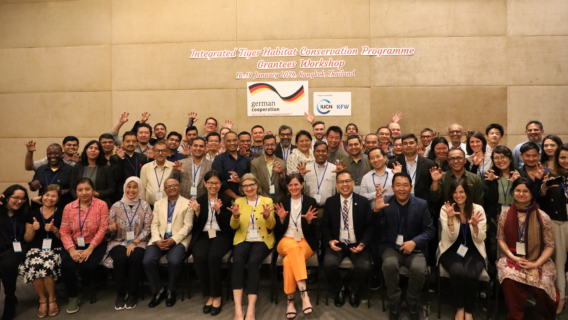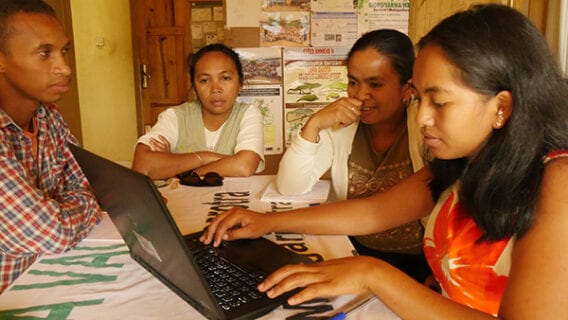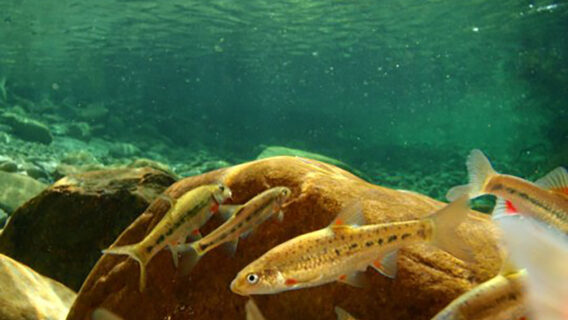Fish rescue boosts the spawning population of Endangered Clanwilliam Sandfish in South Africa

The Biedouw River, a tributary of the Doring, is one of the last known tributaries where sandfish still migrate upstream to spawn at the end of winter when flows subside and temperatures warm. Historically, adult sandfish would travel tens of kilometres from the Doring up into the Biedouw, leaving behind hundreds of thousands of hatchling fish that would over-summer in permanent pool ‘nurseries’ before joining the larger population in the Doring. These days, this process is interrupted before young sandfish can complete that crucial last step: invasive fish (non-native spotted bass and bluegill sunfish) prey heavily on the young sandfish in the Biedouw, and those that do manage to evade these predators perish as previously-permanent pools now dry up due to excessive water abstraction in the catchment upstream.
The Saving Sandfish Project is an ambitious conservation programme that aims to bridge the species’ broken life cycle by rescuing young sandfish and rearing them in relative safety until they are large enough to survive in the wild. Over the past two years, the project team have rescued over 15 000 young sandfish from the Biedouw River and relocated them to a series of alien-free off-stream sanctuary dams within the catchment – South Africa’s biggest freshwater fish rescue to date!
In August and September of 2021, the first cohort of dam-reared sandfish were released back into the wild. A year later, the 2022 spawning season is the first opportunity to assess whether this “rescue-rear-release” intervention has been successful. “We want to know whether dam-reared fish have survived a year in the wild, and if they are now contributing to the annual spawning migration, which these days comprises less than 200 individuals” explains project leader Dr Jeremy Shelton from the Freshwater Research Centre.
Back in 2021, 994 year-old, dam-reared sandfish were tagged with tiny PIT tags (each containing a unique barcode identifier) before being released back into the Biedouw River, in the hope they would return a year later to spawn. A few weeks prior to the 2022 spawning migration, an underwater antenna array that detects nearby PIT tags was installed near the mouth of the Biedouw River. “For two weeks we monitored the array, and on the 18th of August, we got our first hits,” exclaims Cecilia Cerrilla – a PhD student on the project. This confirms that sandfish that were released and tagged a year prior had not only survived, but returned to their natal river as part of the spawning migration!
The antenna array detected a total of 77 PIT-tagged sandfish travelling up the Biedouw River during late August and early September 2022. “Given that the number of wild fish migrating up the Biedouw in 2021 was only 180 fish, the additional 77 fish comprise a significant boost to spawning numbers, and an exciting step towards saving the species from impending extinction” explains Dr Shelton.
These findings have validated the years of effort that have gone into this conservation intervention, showing that dam-reared fish are able to survive in the wild and even return to their natal river to spawn. Encouraged by these findings, the team plan to ramp up their conservation efforts and tag and release 2,000 more dam-reared sandfish by the end of 2022.
This rescue-rear-release programme is the first of its kind in South Africa, and perhaps the entire African continent! “We hope that this success can serve as a model for freshwater fish conservation efforts elsewhere in South Africa and beyond” says Cerrilla.
This publication was produced with the financial support of the European Union through IUCN Save Our Species. Its contents are the sole responsibility of the Freshwater Research Centre/Jeremy Shelton and do not necessarily reflect the views of IUCN or the European Union.




